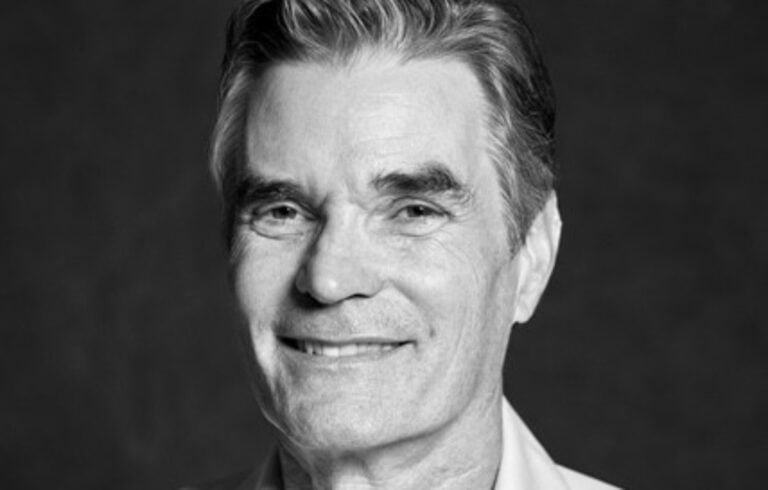
With the country at a point of heightened awareness around racial injustice, U.S. CEOs have been issuing statements in support of their employees of color, announcing new initiatives to boost workforce diversity and reviewing their policies to see how they might do more to ensure that, at least within their company walls, employees are truly treated fairly.
Some companies have gained more traction with their D&I programs than others. CE spoke with CEO Michael Kaufmann about the impressive results Cardinal Health has seen on its D&I efforts and why he believes CEOs cannot stay silent on the issue of systemic racism.
Building a more diverse and inclusive workplace is not just the right thing to do – it’s the smart thing to do. By respecting and appreciating diversity of thought, experience and background, we are becoming more innovative, increasing employee engagement and improving customer and shareholder value.
That is why D&I has been a priority of ours for many years – and I’ve had many “aha” moments. Let me tell you about two.
More than a decade ago, prior to my current role, I realized that women tended not to apply for promotions or stretch assignments as readily as men, and didn’t ask for sponsors or build networks as frequently. That understanding fueled my passion for D&I, and led me to want to serve as the Executive Sponsor of our Women’s Initiative Network. I thought it would be a powerful opportunity to learn – and it was. There’s no doubt that that experience made me a better leader.
Over time, I’ve also learned more and more about racial and social injustice and the inequity that many African American parents face when raising their children. One example – Black parents have to teach their children about what not to wear, about what to do if they’re pulled over while driving, and about how to behave when in a store so as not to seem suspicious. As a white man and a father, I never had to talk to my sons about these things… and that’s privilege.
The business case is clear: Research shows that diversity increases creativity and innovation, promotes higher quality decisions, and enhances economic growth. Diverse and inclusive workplaces consistently outperform non-inclusive and non-diverse workplaces.
In addition to company performance, employees and leaders have a choice where they want to do great work and build a career and future. Diversity and inclusion are at the heart of our culture and a differentiator in attracting and retaining the best talent.
Over the years, we have put into action D&I strategies, solutions, programs and processes that will allow us to create a robust culture that will benefit our employees, our customers and our communities. We require diverse slates for all director and above open positions; we established our D&I Steering Council, and positioned our Executive leaders as Executive Sponsors of our Employee Resource Groups (ERGs) for added visibility and allyship. We have recently established a special CEO cabinet on racial inequity.
In February, I took our leadership team to Montgomery, Alabama, to experience the National Memorial for Peace and Justice and the Legacy Museum, where thousands of victims of lynchings and slavery are honored. We left those sites humbled and changed, and with a continued commitment to speaking out about racial injustice.
Regularly, we review pay and other benefits, and make adjustments on an ongoing basis as necessary. As an example, we recently increased our new parent leave benefit.
But we also know we have more work to do. We want to be a place where every employee is comfortable bringing 100% of themselves to work every day… and we’re committed to that, day in and day out.
I think everyone has biases, both explicit ones and unconscious biases. We all hold unconscious beliefs about various social and identity groups – these come from the way our brains work to organize and understand our world. The challenge, of course, is that we don’t immediately recognize our own unconscious biases. That takes work.
Personally, I surround myself with people I call “truth-tellers” – including some of our employees as well as individuals outside the company. These are folks who I know are not going to tell me only what I want to hear. They give me the hard feedback on biases they might see in me and tell me how others are experiencing the choices we’re making in the work setting.
To help our employees discover some of their own biases, we launched the unconscious bias training that I mentioned. We require managers and above to take the training, and 97% of them have completed it in just the few months that it’s been available. It’s inspiring lots of “aha” moments throughout our workforce.
We look at our own internal metrics to see how we’re doing. While there’s always room for improvement, here are some of our current data: Of the eight leaders who report directly to me, four are women and one is an African American man. Around the world, nearly 40% of our management-level employees and 51% of our professionals are women. In the US, 25% of our executives are ethnically diverse; 23% of our managers are ethnically diverse, and 27% of our professional population is ethnically diverse.
We also benchmark ourselves with world-class studies, including McKinsey & Company’s Women in the Workplace and others.
And we’ve been designated as a Best Place to Work for LGBTQ Equality by the Human Rights Campaign (12 years in a row), we’ve been named a Top Company for Executive Women by the National Association for Female Executives (eight years in a row), and our Chief Diversity Officer, Devray Kirkland, was recently named one of the Top 50 Chief Diversity Officers by the National Diversity Council.
It’s become very clear to me over the years that truly inclusive organizations, where everyone can bring their very best to work every day, are more successful. These organizations are able to attract top talent – and talent thrives in inclusive cultures. Employees are more engaged, more innovative and more collaborative.
Building a diverse and inclusive culture is work – in part because there’s no “one-size-fits-all.” You have to thoughtfully create a multi-layered, multi-dimensional program that continues to grow and evolve with your organization.
CEOs cannot remain silent. When more CEOs take the time to learn about the systemic issues that hold minorities and other groups back, then there is an opportunity to conduct business differently and make different business decisions to help further change.
Racial injustice is our past – and our present. If we remain silent, it will also be our future. As CEOs, we have an opportunity – and a responsibility – to create a different experience for our employees. To fix the problems that are so apparent and heartbreaking, it will take every one of us to listen, learn and act in tandem.
I firmly believe that leaders can – and must – inspire critical and courageous conversations to drive action for change. As CEOs, we can be the voices that inspire conversations about D&I at all levels of our organizations. We can ensure our leadership teams work to be the best allies we can possibly be for all minority communities.
Racial injustice, systemic oppression and improving internal practices for Black Americans and employees are issues of deep importance to me and the entire Cardinal Health team. I want to be sure that we’re living our company values — of integrity, inclusive, innovative, accountable and mission-driven — in all facets of life. We knew we needed to take a more public position on the issues of D&I and racial injustice, and signing the CEO Action for Diversity & Inclusion was one important step.
Again, we’ve been working at creating a more diverse and inclusive workplace for many years. Signing on to the CEO Action pledge has inspired us to be much more intentional in having courageous conversations about diversity and inclusion – addressing uncomfortable issues openly. It also led us to prioritize our rollout of unconscious bias training.
CEO Action has helped bring together a diverse group of CEOs to talk about our experiences. We all care deeply about D&I, and I’m grateful that CEO Action is providing a forum for information sharing. We learn from each other and, I think, inspire each other. And I believe that is helping to make us more effective D&I leaders.




0

1:00 - 5:00 pm
Over 70% of Executives Surveyed Agree: Many Strategic Planning Efforts Lack Systematic Approach Tips for Enhancing Your Strategic Planning Process
Executives expressed frustration with their current strategic planning process. Issues include:
Steve Rutan and Denise Harrison have put together an afternoon workshop that will provide the tools you need to address these concerns. They have worked with hundreds of executives to develop a systematic approach that will enable your team to make better decisions during strategic planning. Steve and Denise will walk you through exercises for prioritizing your lists and steps that will reset and reinvigorate your process. This will be a hands-on workshop that will enable you to think about your business as you use the tools that are being presented. If you are ready for a Strategic Planning tune-up, select this workshop in your registration form. The additional fee of $695 will be added to your total.

2:00 - 5:00 pm
Female leaders face the same issues all leaders do, but they often face additional challenges too. In this peer session, we will facilitate a discussion of best practices and how to overcome common barriers to help women leaders be more effective within and outside their organizations.
Limited space available.

10:30 - 5:00 pm
General’s Retreat at Hermitage Golf Course
Sponsored by UBS
General’s Retreat, built in 1986 with architect Gary Roger Baird, has been voted the “Best Golf Course in Nashville” and is a “must play” when visiting the Nashville, Tennessee area. With the beautiful setting along the Cumberland River, golfers of all capabilities will thoroughly enjoy the golf, scenery and hospitality.
The golf outing fee includes transportation to and from the hotel, greens/cart fees, use of practice facilities, and boxed lunch. The bus will leave the hotel at 10:30 am for a noon shotgun start and return to the hotel after the cocktail reception following the completion of the round.